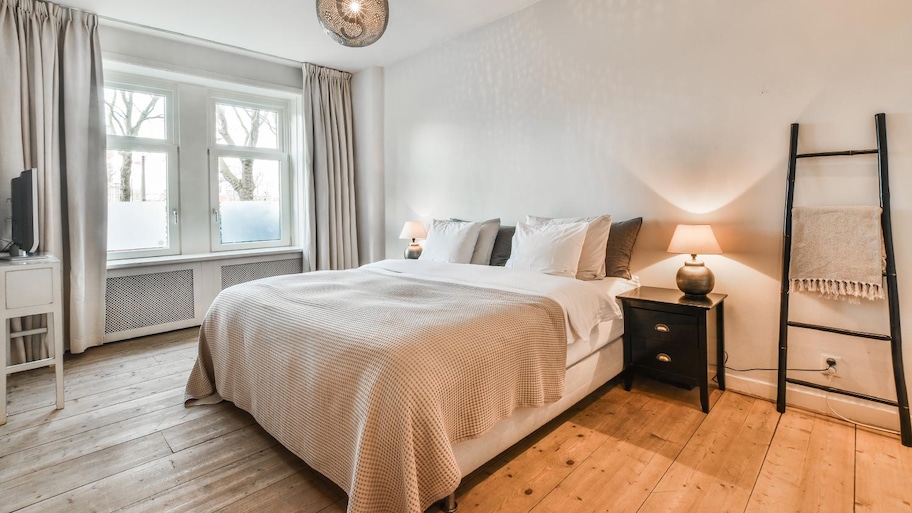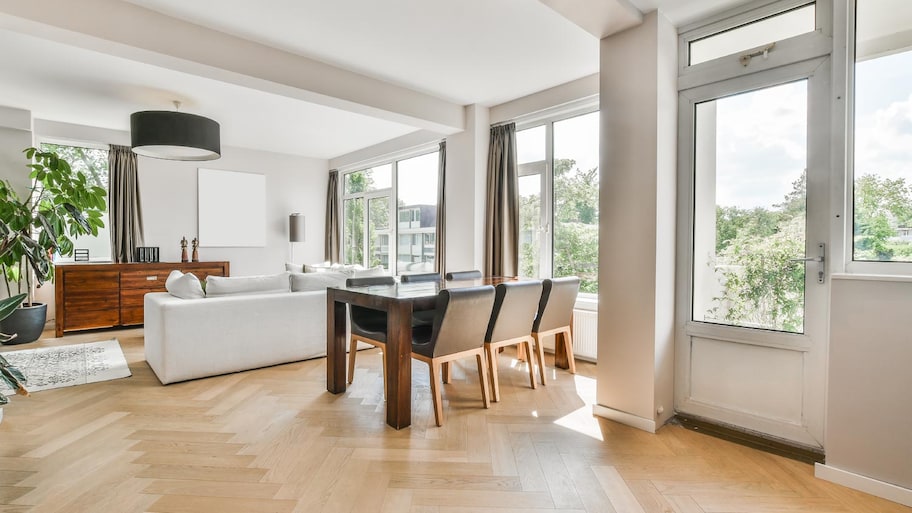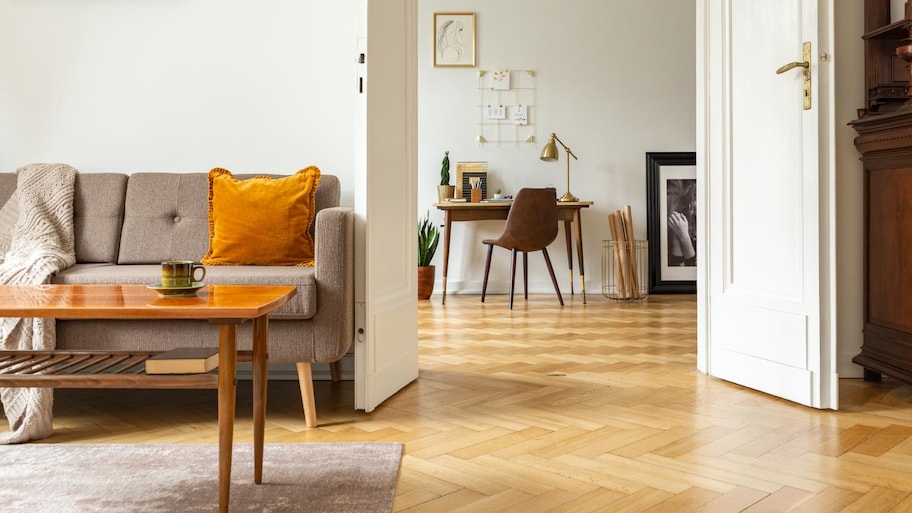Select a wood stain shade you'll be happy with for the long haul
If you’ve been mulling over how to give your scratched-up wood floors a new lease on life, try staining them. With so many hues to choose from, though, the stain color options can be overwhelming. Read on for tips on how to pick a stain color to apply to your wood floors.
1. Make Sure You Want to Stain
If your floors are in good condition, you should consider showcasing their natural grain and hue. Think exotic or prestige woods, like mahogany, cherry, walnut, or maple. In these cases, you should apply a wood finish, not a stain.
A finish means coating the wood with clear polyurethane or lacquer to seal and protect it. Other than adding shininess, it won’t change the wood’s appearance. On the other hand, a stain colors the wood, leaving a more dramatic effect on how it looks.
So, if you want to change the hue of your floors or hide their imperfections (like water damage), the best course of action is to stain. Since stain has a thinner base than paint, it alters the color while still letting some of the floor’s natural grain and color show through.
2. Consider Your Home’s Overall Style
When deciding what color of wood stain to use on your floors, the first step is to determine whether you want your floors to serve as the focal point of the room or blend into the background. If you want the wood floors to pop, very dark floors (stained with espresso, ebony, or tblack) and floors stained an unusual color (like emerald or indigo) will stand out.
It’s also essential to ensure that the stain color fits in with your home’s overall style, such as farmhouse or modern. If you have a farmhouse-style home, consider a light brown stain for your floors. For contemporary or modern homes, try dark brown, gray, or black wood stains.
3. Think About the Resale Factor
If you plan to put your house on the market anytime soon, opt for a stain that’s versatile and crowd-pleasing. The most popular stains for wood flooring tend to be grays and browns that simulate the look of wood. Think walnut, pine, mahogany, or golden oak, in addition to all shades of gray, from classic to dark. If you plan on staying in your home for a while, though, you can choose a wood stain color that’s unique to your taste.
4. Assess Cabinetry and Furniture

Ideally, you should choose a floor stain that complements the tone of your cabinets and furniture. Try not to match the stain exactly to the colors of your cabinets and furniture—instead, it should complement or contrast with them. For example, if you have white kitchen cabinets, consider contrasting them with espresso-toned floors. If you have cream-colored furniture, try applying soft gray wood stain to your floors.
5. Evaluate the Light
If the room in question is dark, you’ll probably want to opt for a lighter wood stain. Lighter floors tend to reflect more light, while darker floors absorb more light. Light color-stained floors, such as in gray, pine, or golden oak, can make your home seem bright and cheerier.
6. Keep the Type of Wood in Mind
A good rule of thumb is to always consider the type of wood floor that you’re going to stain. Stain shades will look different depending on whether it’s applied to maple, white oak, red oak, or any other type of wood. If the wood is very dark, like mahogany, a light stain will have no effect on it. For the stain to change the hue of a dark wood, you need to choose a much darker color.
On the other hand, lighter woods, such as red and white oak, can take on almost any stain color. Keep in mind that if you’re applying a stain that’s not very dark, some of the wood’s hues (such as brown or yellow) will show through and meld with your chosen color.
7. Don’t Forget About Maintenance

In general, lighter-stained floors are easier to maintain because they show less in the way of dust, crumbs, and scratches. If you have light-haired pets who shed, stay away from dark-stained floors. Although there aren’t any general rules for how often you need to clean dark versus light floors, assume you’ll want to sweep the latter more often to get rid of visible dust, crumbs, and pet hairs.
8. Determine Whether You Want the Wood to Show
If your floors have surface damage, like watermarks, consider a dark stain, like espresso or true black, to hide discoloration. On the other hand, if your wood is in good condition with a rich color and attractive graining, choose a light stain, like pine or golden oak, to show it off or a polycrylic or polyurethane finish.
9. Go Custom
If you’ve searched through the available stain colors and you still can’t find what you’re looking for, make your own blend. Imagine you’re a painter blending multiple stains on a palette to develop your own shade.
Start by choosing a few colors from the same stain line, and ensure that they all have the same base (water or oil). During the mixing process, record the measurements of each stain type. That way, you’ll be able to replicate the exact color when it’s time to stain.
10. Test It Out
It’s helpful to place stain-color charts on your floor, but you won’t know for sure how a stain will look in your home until you test it out.
Since sanding affects the appearance of stains, test out a stain by applying it to a small area of the floor after you sand it for the second time. If you’re deciding between a few different stains, try them all and determine which one you prefer. If you take this route, resand the test areas before staining the entire floor.
As an alternative, ask a flooring professional to make large but portable samples by sanding, staining, and finishing the type of wood you plan to use. Or buy the wood planks yourself and DIY samples. Then, move these planks around your home to see how the stain looks in different rooms and lighting, as well as at other times of the day.





